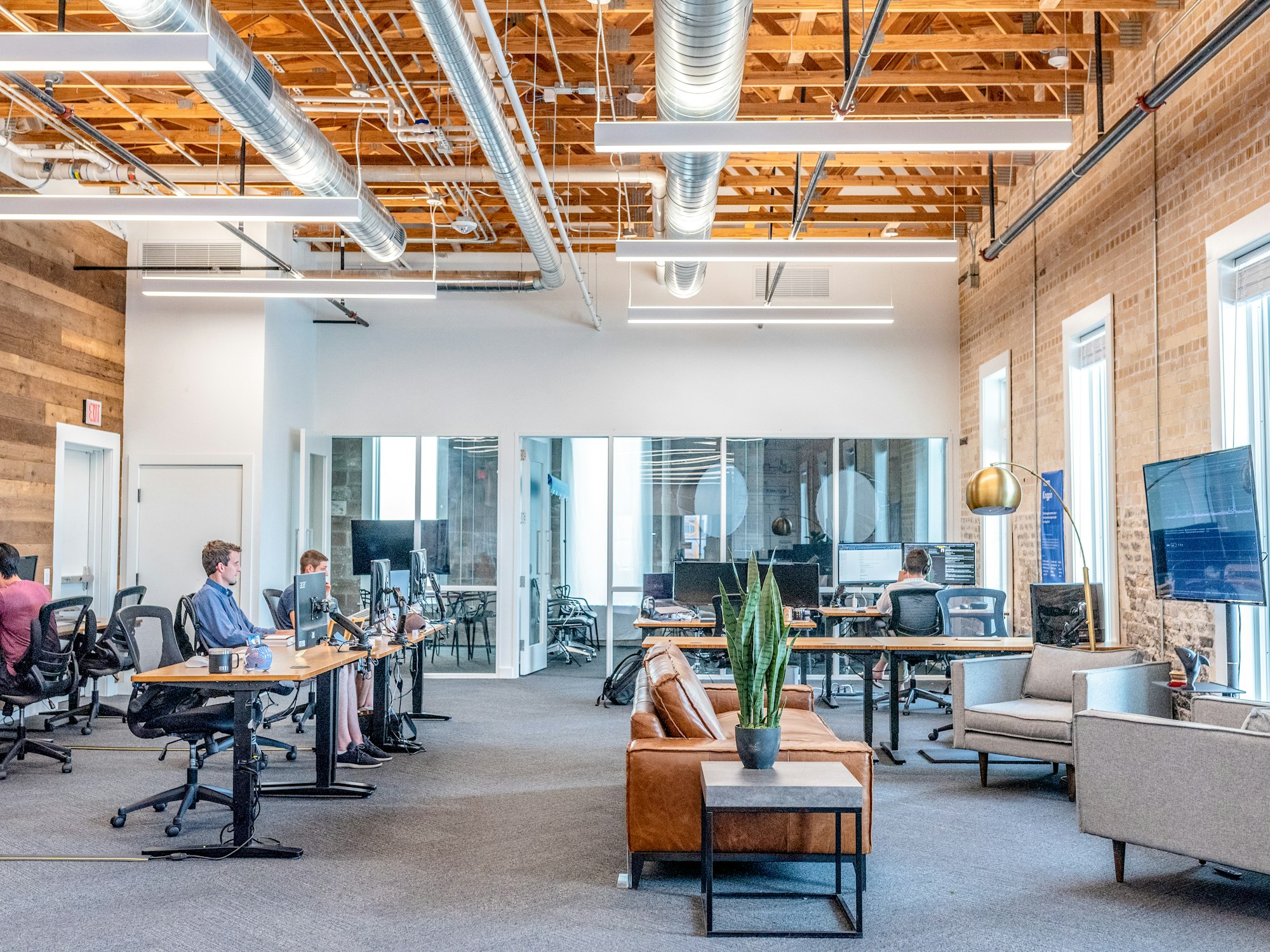Health and safety were the top motives for sending employees home to work during the COVID-19 pandemic. And health and safety will be the driving factors for employees’ eventual return to the office. Ware Malcomb’s 2020 Return to the Office research project, explored employees’ motivations and behaviours during the forced work from home period, where findings affirmed that employees will be emboldened to push back on returning to the workplace until they feel it is safe to do so. As organizations begin planning this transition back to the office, things will be different. Significant attention will be paid to “visible housekeeping” that was once intentionally concealed. Workstation areas will no longer have the crowded café feel, rather they will be de-densified to maintain social distancing. And whoever imagined that the concept of a restroom attendant would ever re-surface?
Every organization’s return to the office will be customized to their circumstances, but each will have a few commonalities:
- Perception is reality and what employees perceive is what they will believe is happening.
- Transparency is essential for building trust and managing misinformation.
- Common sense should prevail, grounding decision making in practical sound judgement.
Whether an occupier in a multi-tenant building or an end user in a corporate campus, the strategic and tactical planning guidelines outlined below are situationally dependent. Different circumstances will require different responses in planning for bringing employees back to the office.

Workplace Assessment
During this shelter-in-place time period, conducting workplace research will provide valuable perspective on your working from home employees, that could inform future remote working policies. Formulating the questions to investigate will drive the research methods, which could include surveys, virtual focus groups, interviews or ethnographic studies such as photography, video and journaling. Gathering this information while employees are still “in situ” at home is essential for validity.
Communications & Training
The level of organizational communications prevalent during the work from home period will be maintained after employees are allowed back into the office. Openly advertising protocols for visitors, social distancing and housekeeping will establish a sense of trust that employees’ health and safety are top priorities. Things will be different around the office and campus post COVID-19, and a robust training and change communications program will establish the “new normal.” Examples of change management techniques include establishing back-to-the-office change champions, tours and instructions for using the office space, if it has been newly re-configured for social distancing, and a variety of change communications documents, such as “Frequently Asked Questions postings” and “Stay-Safe Etiquettes guides.”
Safety Protocols
Safety protocols can be adapted in various ways. Screening procedures for employees, visitors and contractors may use the Infrared Fever Scan Systems (IFss) or other health assessment measures. Staggered work times/days, or 4-day work weeks can reduce the number of employees in the office at the same time. Lunch and break times can be scheduled or lengthened to minimize occupant loads.
In addition to social distancing and capping group sizes, centralizing trash and recycling bins with frequent disposal can slow disease transmission. A clean desk policy devoid of employee memorabilia will enable the night-time cleaning crew to thoroughly clean all desks.
In addition to the conventional hands-free faucets, and soap and paper towel dispensers, no touch options can be considered for doors, badge readers and garbage/recycling bins. The increased use of virtual digital assistants for enterprise applications is another consideration.
Employees may choose to wear Personal Protective Equipment (PPE) when returning to the workplace to protect the transmission of germs through contact and droplet routes. PPEs include face masks, gloves and potentially goggles. Organizations may also make these available to employees for personal use outside the office as an additional level of protection.

Workplace Guidelines
Reception Areas
If no formalized visitor protocols or badge requirements exist, consider controlling access to the office via signage for phone-in entry. Temporary plexiglass “sneeze guard” screens can be installed at reception or check-in points. Rearrange or take away seating in the reception area to manage social distancing. To maintain hygiene, remove magazines, corporate swag or pens from the reception space, and keep the hand sanitizer dispensers in plain view.
Workstation Areas
To accommodate six feet of social distancing, start with a floor plan indicating the workstations to be occupied, to determine your maximum capacity per floor or wing. Remove chairs or even monitors to discourage un-occupied workstation use. Seating should remain assigned until the widespread threat of virus transmission has diminished. Employees’ personal items should be removed for thorough nightly worksurface cleaning. Pack those beanie babies up and bring them home!
Additional concepts include installing higher panels/shields between workstations or re-orienting workstations, so employees do not face one another.
Collaboration Areas
To satisfy the 10-person maximum gathering rule imposed by many states and municipalities, remove extra conference room chairs and install signage indicating the maximum number of people allowed in each conference, meeting, huddle and focus room. Use a portion of your largest conference room for chair storage, until the need for social distancing has diminished.
Ancillary Spaces
Re-adjust the spacing of ancillary furniture in public areas, break out zones, town-hall spaces and building atria. Remove additional furniture not required in the new layout. Install signage for the maximum capacity allowed by law in these areas.
Training Rooms
As training remains virtual for the foreseeable future, there are a few potential uses for existing training rooms. Locate agile teams into these spaces, relocating furniture to satisfy social distancing requirements. Or repurpose these rooms to temporarily store all the chairs and ancillary furniture that has been removed from the workstation areas. Keeping this furniture on-site rather than shipping to your dealer’s storage or your warehouse will ease the transition if/once these pieces can be returned to their original locations.
